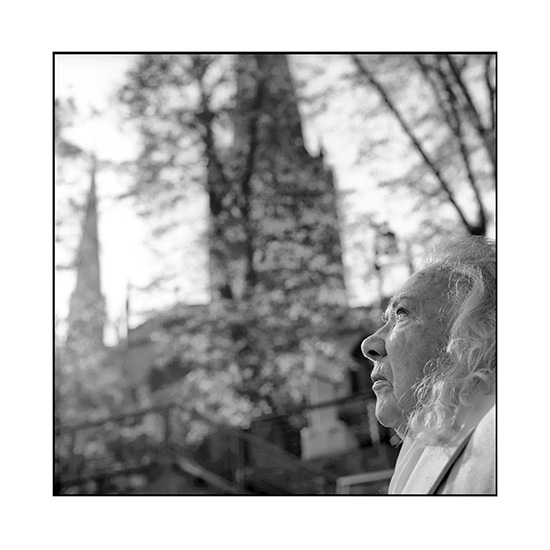
“We lost quite a lot of friends and we never found the bodies of some.”
-Jean Taylor, Coventry blitz survivor
Jean Taylor was eleven years old when the air raid sirens sounded at 7pm (19:00). She, her younger brothers and mother, crammed into a bomb shelter with 400 others. The shelter was basically a deep hole dug across the road that had two buckets used as toilets.
“In the morning, we came out of the shelter. Everything looked horrible. All the windows at our home were blown out. We had no water, electricity, or gas. In the estate next to us there was a huge crater the depth of two double-decker buses. My mother made a little fire in the garden to cook a pot of stew. I told my mother I was going to school. She insisted that I wouldn’t make it there, but I still tried. I got as far as half a street when I began to see bodies covered in blankets and firemen with no water as everything was burning. Then a fireman said to me:
‘What do you think you’re doing?’
‘I’m going to school.’
‘You can’t get to school!’
As I was standing there in my school uniform, one of my classmates came. He took me through the burning rubble,and we finally got there. We started in September with 27 students in the class. After the blitz ,here were 17 remaining. We never discovered what happened to the other 10.”
The British city of Coventry was bombed several times during the Second World War by the German Luftwaffe. The most devastating of those attacks came on the evening of November 14th, 1940. During “Operation Moonlight Sonata,” high explosive, incendiary,and landmine bombs cascaded upon the city. When the fires smoldered ,he majority of the city lay in ruin. The city center and more than 4,000 homes were destroyed. The raid had resulted in such epic levels of destruction for the time that the Germans used the term “Coventrated’ when later describing similar levels of destruction to enemy cities.
This portrait is a part of my From Above project, which is a collection of portraits and reminiscences of atomic bomb survivors and firebombing survivors from Dresden, Tokyo, Coventry, Rotterdam and Wielun. A portion of From Above is permanently exhibited at the Nagasaki Peace Memorial Hall for Atomic Bomb Victims. It has also been exhibited in museums and exhibition spaces throughout Asia, Europe, North America and including the United Nations.
From Above was released as a limited edition book that was sold at PhotoEye.com. The book is sold out on the site, but I have the last 20 copies that can be bought directly from me. Contact me through social media or at paule.saviano@gmail.com if you’re interested in purchasing a book.